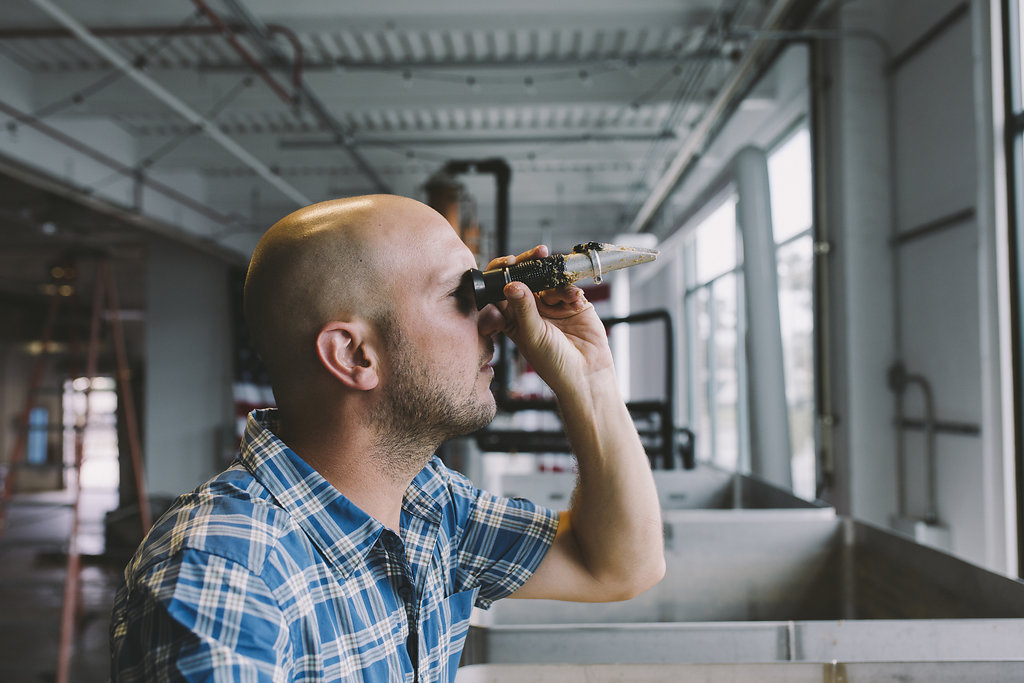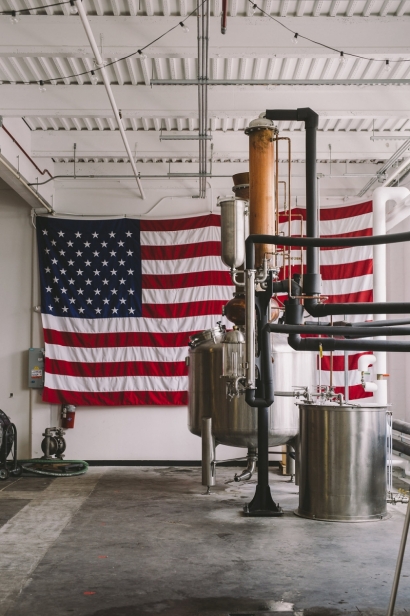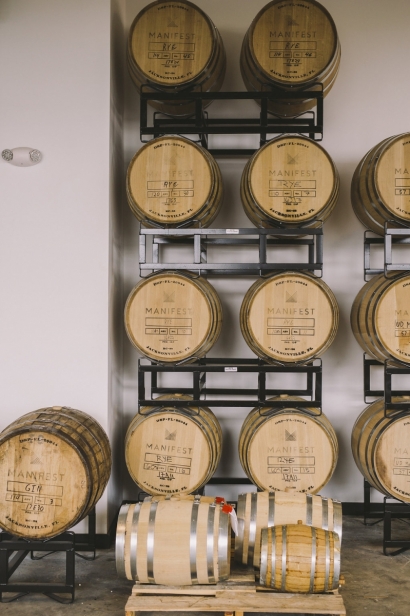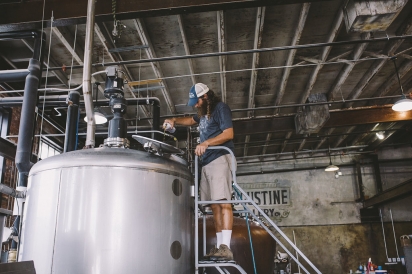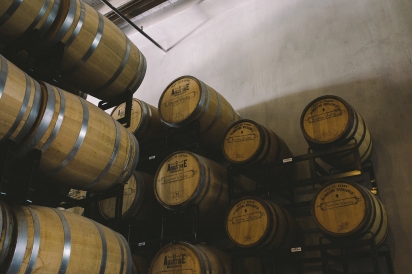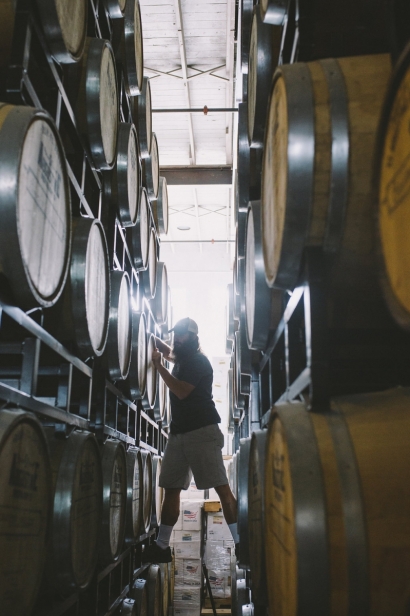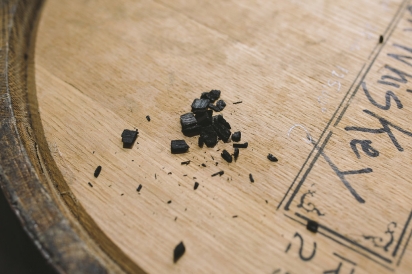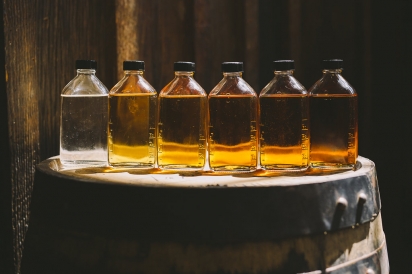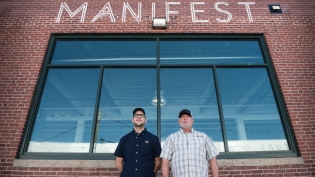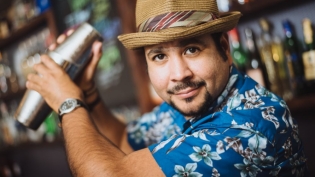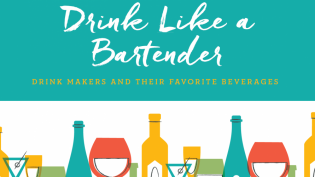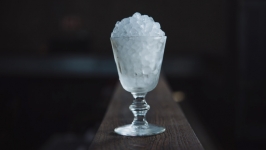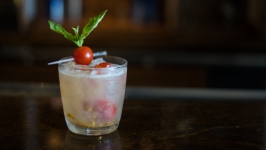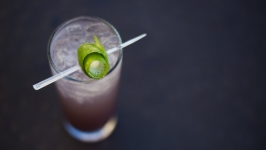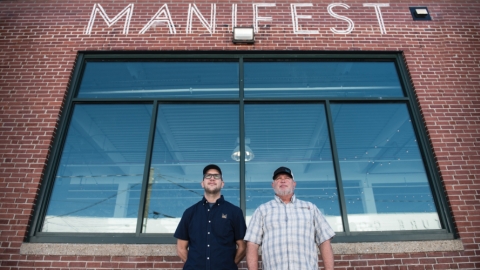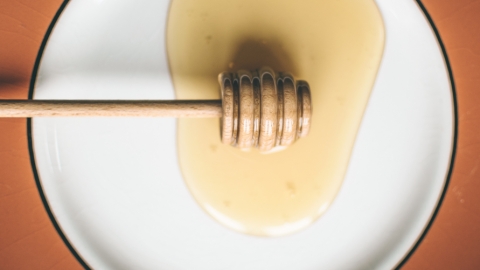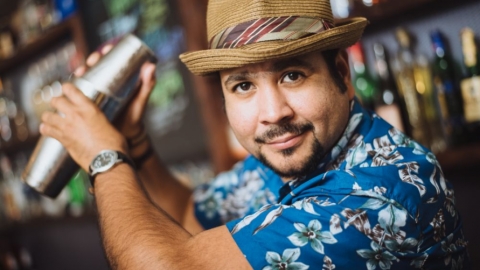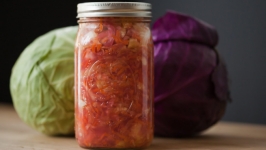Barreling Liquid Sunshine
Imagine, if you will, a whiskey. Not your typical well liquor, but a complex and mature sipping spirit. The kind of drink taken neat or with a solid cube of crystal-clear ice. Its deep, amber color and delectable flavors of caramel and vanilla evoke images of the rolling Kentucky countryside or perhaps the great American West.
Not often, however, will such a dram conjure up thoughts of a Floridian beach. For residents of the First Coast, this could very well change. Northeast Florida has, in recent years, become home to several start-up craft distilleries, including the St. Augustine Distillery, Marlin & Barrel Distillery and Manifest Distilling. Each of these operations has been laboriously filling casks with a variety of spirits, including whiskey, bourbon, rum and gin.
Aging alcohol in barrels is a tradition that dates back hundreds of years, well before distillers knew the effects of wood on various spirits. Barrels were originally used as a form of storage and transportation for liquor. Over time, preference began to shift towards spirits that were stored in such containers, and barrel aging eventually became a technology instead of a necessity. Today, the spirits industry is currently in the midst of what many have termed a “bourbon boom,” as demand for bourbon, and other aged spirits, has soared to astounding levels. In fact, the bourbon industry is currently running out of aged inventory, and an increasing number of popular bourbon brands have recently dropped their age statements from their bottles in an effort to keep up with the public’s current thirst. With the absence of such statements, distilleries no longer have to dump and bottle barrels that are a certain number of years old and can instead blend barrels together based on taste rather than age.
Demand at such levels almost always elicits response, and this industry has responded with gusto, particularly in the craft sector. Craft distilleries are popping up every day across the country, each of them racing to barrel as much of their spirits as they can in what could be described as a modern-day gold rush. “Craft” is a term that is not legally defined, but much like the craft beer industry, craft distilling can be considered smaller and more artisanal in nature. With this increase in diverse distilling operations comes new and diverse spirits, the flavors of which are influenced by their regions.
Kentucky ages somewhere between 95 to 98 percent of the U.S. supply of bourbon, not surprising given the perfect mixture of conditions that exists in the region. Kentucky grows a massive amount of corn, and bourbon, by law, must contain at least 51 percent corn in its grain composition, or mashbill. Kentucky also possesses an abundance of naturally occurring, limestone-filtered water, which effectively removes iron compounds that are detrimental to the cooking process grains must undergo before they are fermented and distilled into liquid ethanol. Most notably, however, Kentucky experiences extremely hot summers and extremely cold winters.
Temperature exchange is a key component in the life of an aging spirit. Hot temperatures cause the barrel’s wood pores to swell and open, and the liquid alcohol to expand, driving it deep into the wood and causing a percentage of the alcohol to evaporate out of the barrel itself. Most barrels, particularly those used for bourbon and rye whiskey aging, have been deeply charred to various levels, a process that caramelizes different wood compounds and produces sugary sweet flavors in spirits. Cooler temperatures cause those wood pores to contract, expelling the alcohol and allowing the liquid to pull out char flavor and character while also allowing the spirit to “rest” and oxidize over time. This constant ebb and flow of liquid inside a barrel drives the aging process forward. Specifically, between 60 to 70 percent of an aged spirit’s flavor, and 100 percent of its color, can be traced back to those congeners and compounds imparted by its barrel.
Aging spirits in Florida, however, represents a unique challenge. Unlike Kentucky, Florida does not experience such extreme seasonal changes, especially with regard to cooler temperatures. Alcohol will go “dormant,” or rest without experiencing the aging phenomenon, at temperatures below 40 degrees, weather not typically experienced in Northeast Florida. High temperatures, such as Florida’s famous heat, will increase the loss of both ethanol and water due to naturally occurring evaporation, therefore increasing the alcohol concentration, or proof. At high humidity levels, however, more ethanol than water evaporates, and the proof of the alcohol can actually decrease over time.
Florida contends with a mixture of both of these variables, and the effects of our climate on aging barrels is still being discovered. Barrel maturation happens at much faster rates in Florida than it does up north, and as Philip McDaniel of the St. Augustine Distillery jokes, barrels in Florida “age in dog years.” His distillery produced one of Florida’s first bourbons since pre-Prohibition, and dealt directly with the state’s unique climate conditions. The St. Augustine Distillery originally used 25-gallon barrels to age its bourbon distillate, but it became apparent over time that Florida’s heat and humidity was causing it to age too quickly. “It began to over-extract,” he said, which led his team to transfer their bourbon from their rapidly-aging 25-gallon barrels to larger, seasoned 53-gallon casks in an effort to slow the process down. McDaniel called Florida’s heat “challenging” to work with when producing spirits, since “you have to be mindful of so many different factors.”
While the St. Augustine Distillery is a few miles away from the ocean, Marlin & Barrel Distillery, located in Fernandina Beach, is blocks away from waterfront. This could potentially, given temperature, humidity, tides and a variety of other factors, greatly influence their products’ aging. They are currently in production for a solera-style whiskey. Solera refers to an aging technique that involves blending whiskies (or other spirits such as wine, brandy or vinegar) and fractional blending based on barrel storage and age. Traditionally, casks are stored in vertical and horizontal stacks, with the oldest residing on the bottom. Small amounts are extracted from the older barrels for bottling, and younger distillate is then added in from the row above. They are one of the few distilleries aging and blending a solera-style whiskey in Florida, which has yet to be released.
Manifest Distilling, located in downtown Jacksonville, is the newest to join the Northeast Florida distilling community, and their rye whiskey, the first certified-organic whiskey to be released in Florida, will make its debut in summer 2017. However, the first batch of Manifest Rye Whiskey will be significantly different from future releases. “The first barrels that we dumped for our rye began their life in Chicago,” said David Cohen, founder and Head Distiller for Manifest Distilling. The first 20 barrels of Manifest Rye Whiskey began aging in Illinois, where they were distilled and barreled at Koval Distillery, another renowned organic distillery. “We became very well acquainted with the founders of Koval through our time spent at the Siebel Institute and came to an arrangement that allowed us to use their stills to distill our first barrels of rye.” What makes the first batch of Manifest Rye Whiskey unique is not only its wheated mash bill, but the fact that it spent half its time aging in Chicago and the other half aging in Jacksonville. “It will be very interesting to see how they compare to the entirely Florida-aged whiskey that we’ve put into barrel since we’ve started distilling here,” Cohen said.
So, what are consumers to expect from these First Coast spirits? For starters, much younger ages. There is a misconception that in order for an alcohol to be of decent quality, it must carry a lofty age statement on its bottle. While this isn’t necessarily true, alcohol that is produced and aged in Florida won’t likely spend as much time in a barrel as alcohol produced up north. There’s simply too much heat and humidity. Will this produce a lesser-quality spirit? Absolutely not. The beauty of the craft distilling movement is the creativity, innovation and diversity that it encourages. Distillation in Florida, much like other parts of the country, can be defined in terms of its terroir, which has and will continue to impart unique flavors and essences into alcohol that won’t be found anywhere else in the U.S., or, arguably, the world. There’s a reason Florida is known as the Sunshine State, and by the looks of it, craft distilleries are starting to capture and age some of that sunshine in barrels.
To learn where you can find some of Florida's finest spirits, visit Manifest Distilling, St. Augustine Distillery and Marlin & Barrel Distillery.


